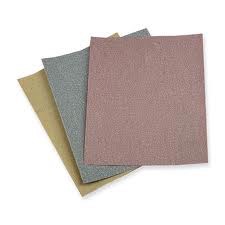Sanding In Depth Study continued
Sanding, for starters is changing a rough surface to a smoother finish. This is to create the smoothness we require before applying that final finishing and burnishing of our driftwood sculpture.
Since sanding is really a cutting tool on a much reduced size, we need to explore this new tool and evaluate its uses. Any wood worker knows that we simply start with coarser grit and work down through the grits for a smother and smoother finish. With each step you remove the scratches left by the coarser grit with a finer sanding until at about the 320 to 400 grit there are no longer visible marks. Then those scratches are too small to feel or see. But are they? Often we just glide over the easier to sand surfaces and do not even look for those scraper marks. The surface will feel smooth, but there are still visible marks from prior tools. Examine your work in bright sunlight, with a powerful light, or have another artist inspect it for you. Be sure you tell the examiner that kindness is not what you are asking for, proper finish is!
 Skipping grit to save time might be just a costly solution. Remember it is much easier and less time consuming to use every grit to smooth your work. You can use 180 grit to remove scratches left by 120 grit, but it will take longer and much more elbow grease than using 150 grit then 120, 220, 320, 400 and so on. (Just a note: Softwoods will take much less time to sand to a smooth finish.)
Skipping grit to save time might be just a costly solution. Remember it is much easier and less time consuming to use every grit to smooth your work. You can use 180 grit to remove scratches left by 120 grit, but it will take longer and much more elbow grease than using 150 grit then 120, 220, 320, 400 and so on. (Just a note: Softwoods will take much less time to sand to a smooth finish.)
Now, here is the dicey part. I have always said to scrape and sand with the grain. This is true enough most of the time as sanding cross grain often leaves deeper gouges that are harder to remove. But there are these exceptions: Sanding is easier if you sand areas at 45 to 60 degree angles. This direction of sanding will cut across the wood fiber bundles faster as this will offer the least resistance. Using a cross-grain/with-grain sanding technique will help you get a smoother finish faster. Always be sure to do your last sanding with the grain to ensure removal of any cross grain scratches. Do this technique with each grit. You will like your results!
Arline De Palma
